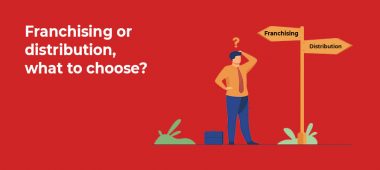Most of the people who work with me want to own a business they can grow.
But the thing is, the word “grow” isn’t very specific.
For example, if I was a restaurant owner, my idea of growing business may involve adding more tables because more tables mean more revenue (as long as I can fill the extra seats with paying customers). Alternatively, I may want to grow my business by adding more physical locations, which would in effect give me multiple businesses. Both ways are growing, but the methods are not similar.
Which method would you use to grow? If you’re a franchise owner who uses the second method to grow a business, you’d be known as a multi-unit franchisee. And that’s what I’m going to talk more about today.
Ways To Grow Your Franchise Business
If you’re already to the point of investigating franchise opportunities on Franchise Direct, you need to also start thinking of how and how much you want to grow your franchise business once you invest in it.
You may only want one franchise location because it’s simpler to operate and manage. And, as long as it’s successful and you can make a reasonable income from it, that works. You’ve succeeded in growing the franchise as you want.
On the opposite end of the spectrum, maybe you want to build an empire. One way to do that would be to become the owner of a master franchise, a contract with the franchisor where you would control the franchising efforts in a specified area.
The other way to build an empire would be to own 50, or maybe even 100 franchise locations. That said, I’ve only run across a dozen or so clients over the years who were empire builders. Clearly, it’s not for everyone.
The Multi-Unit Franchise Model
Even if you’re not an empire builder—just want to grow a good-sized business, multi-unit franchising is a terrific way accomplish your goal. Here’s how the model works.
You’ll proceed with the research process much like you would with a single franchise unit. However, once you decide on a franchise that offers multi-unit opportunities and has territory available near you, the differences will become apparent.
Typically, because you’re making a commitment to invest in multiple franchise units (let’s say 3), the franchisor will discount the upfront franchise fee for each unit. So, for example, if the franchise fee (for one franchise) is $40k, you may only need to pay $30k. Of course that’s for each franchise unit, so it would be $90k upfront in total, plus all of the other costs that go into starting each of the franchise units. In addition, something else you’ll see in your contract is a “build-out schedule.”
Basically, a build-out schedule is the timeline denoting when each franchise unit is expected to be up and running. For instance, your agreement may stipulate that you must open your first unit within 12 months of signing the agreement, your second unit may be scheduled to open 14 months after the first one, and your third unit may be scheduled to open 14 months after your second one.
Multi-Unit Franchising Is Serious Business
Becoming the owner of a multi-unit franchise business requires a serious commitment of time and money.
First off, you’ll need to invest more upfront than you would if you were only investing in a single location franchise business.
Secondly, since your investment is larger, the financial qualifications required by the franchisor are going to be at a higher level.
Thirdly, you’re likely going to feel a little more pressure (internally) than you would as a single location franchisee. That’s because not only will you need to successfully open and operate your first franchise business location, you’ll need to set aside time to find and research your next franchise locations soon after getting the first one up and running so you can open them on time.
Now, that’s not a bad thing. As a matter of fact, it can be exciting. But it’s not going to be as exciting as having three (or more!) franchise locations open and bringing in revenue and profits for you.













